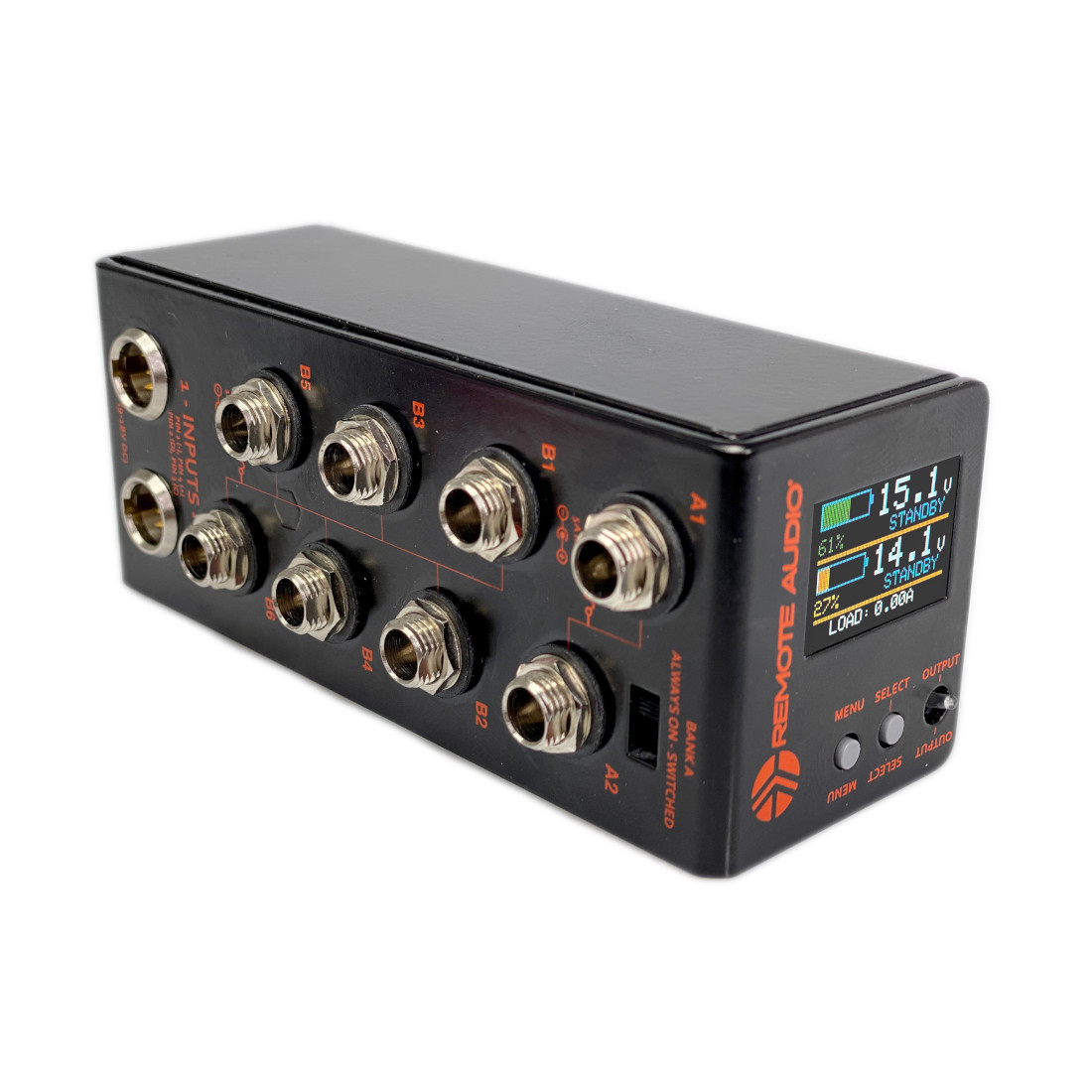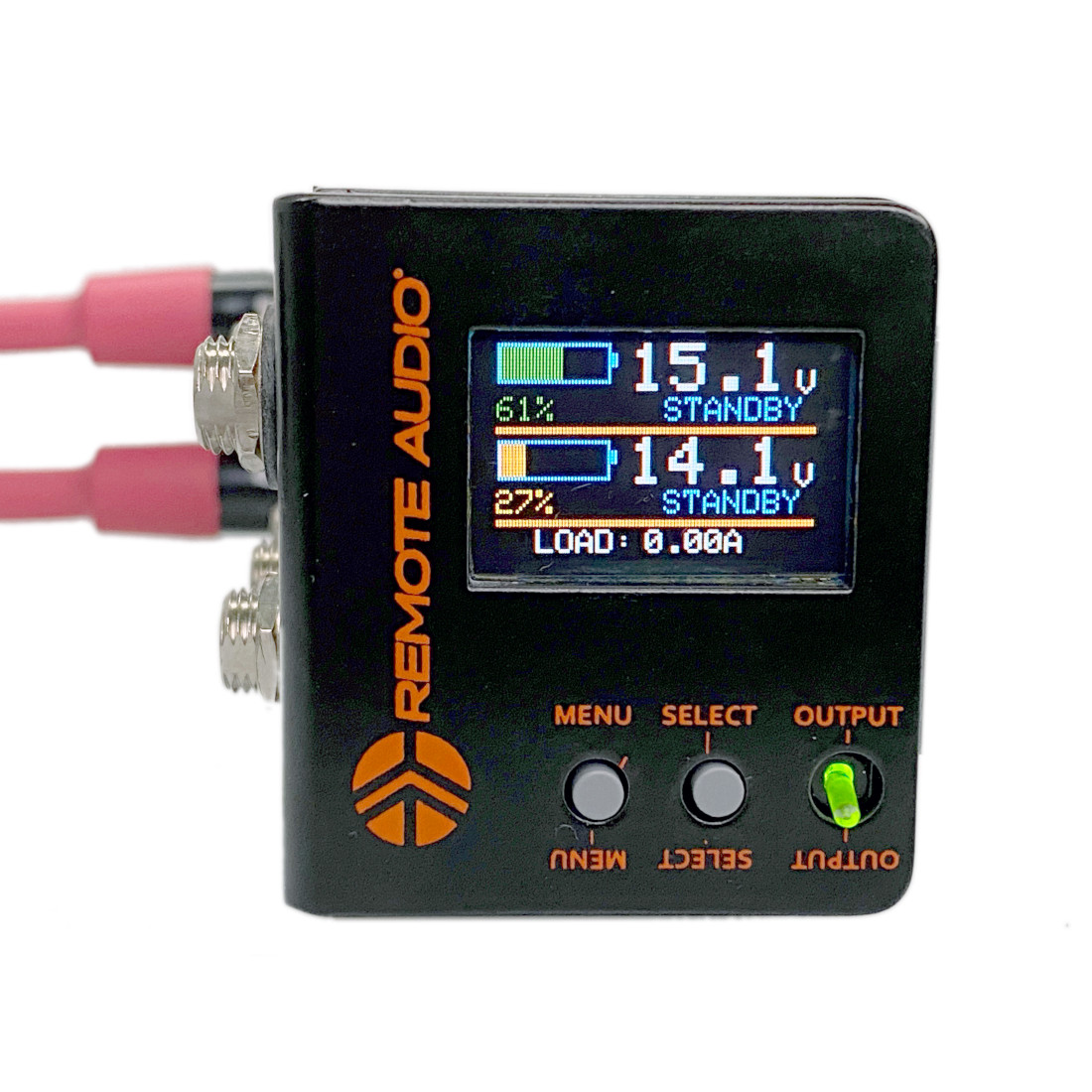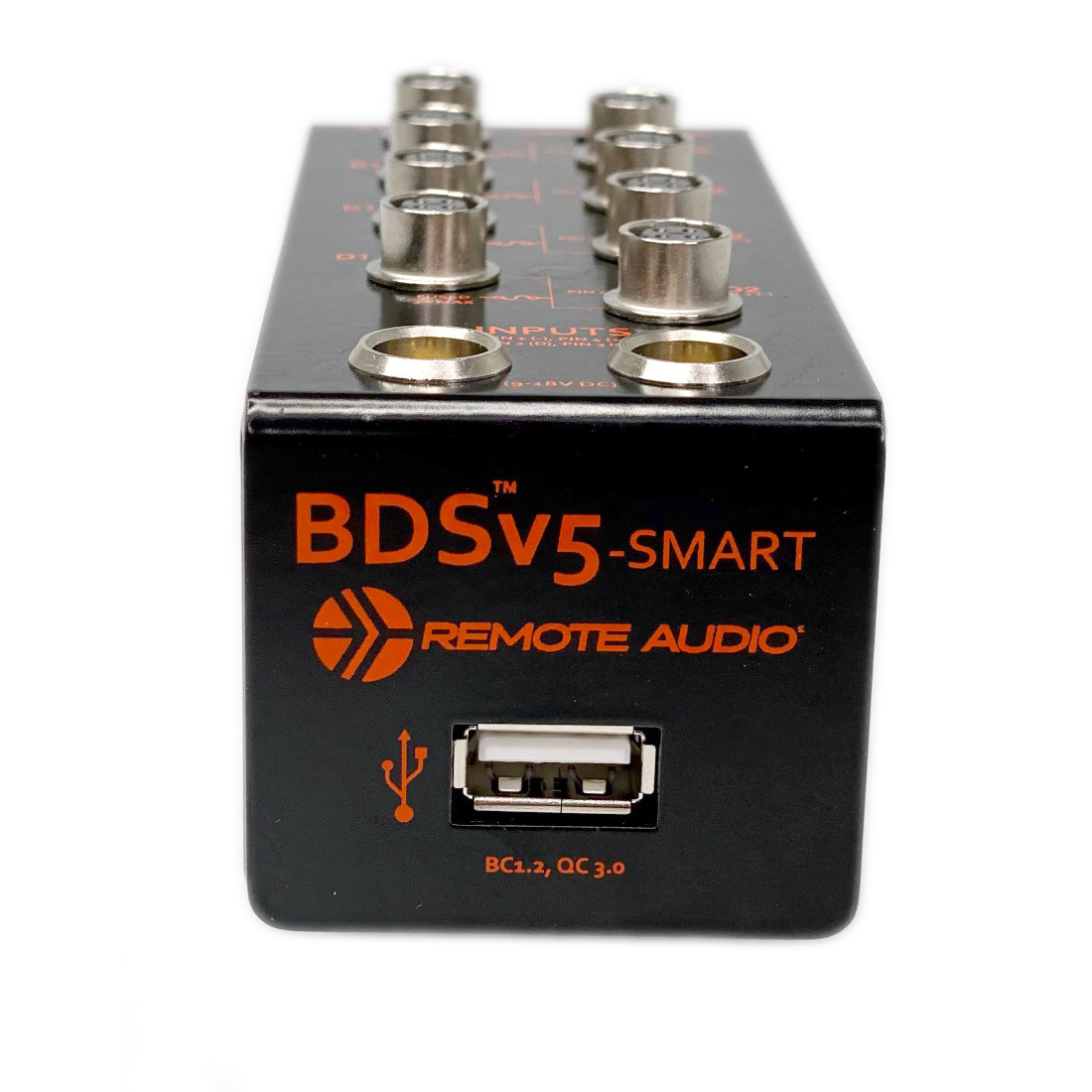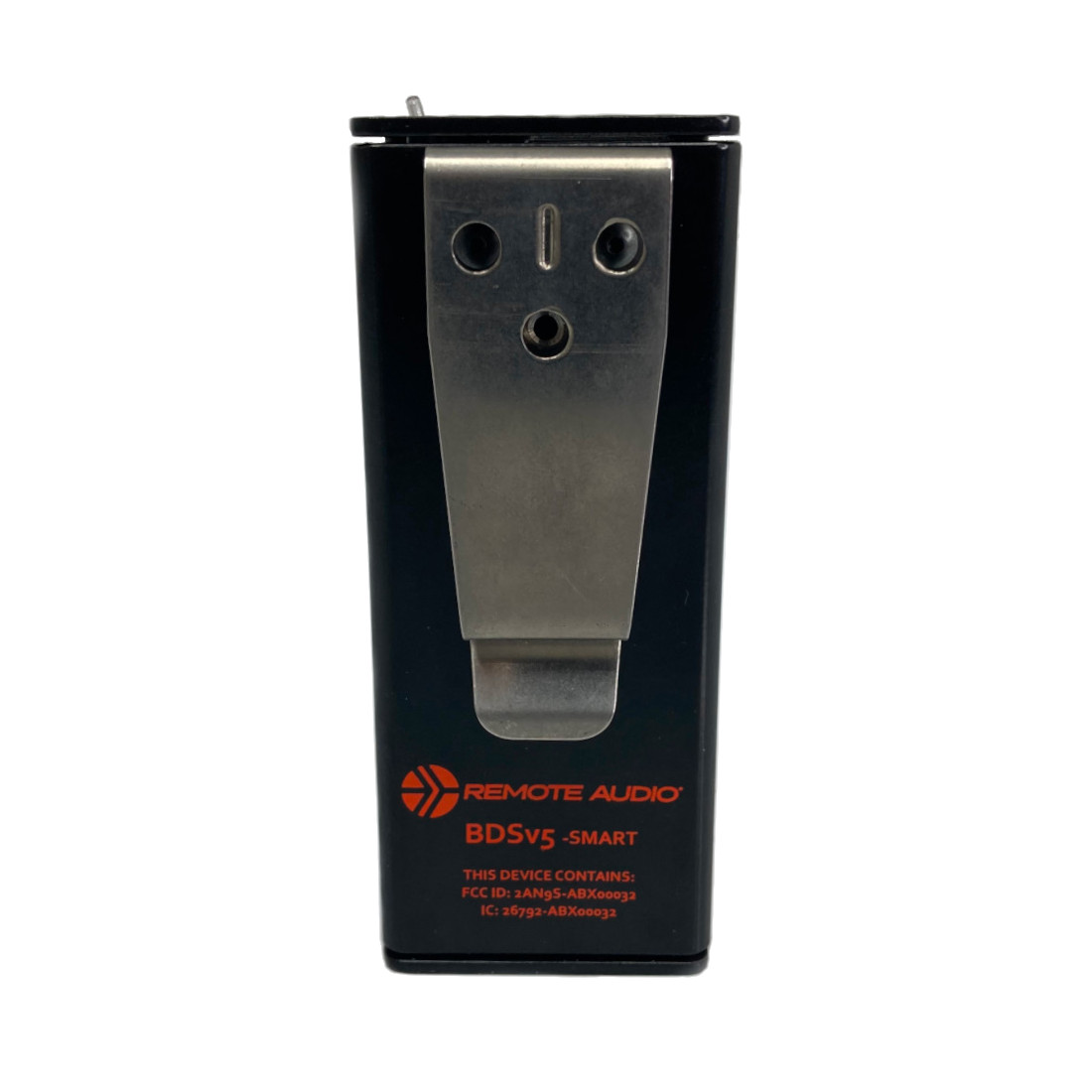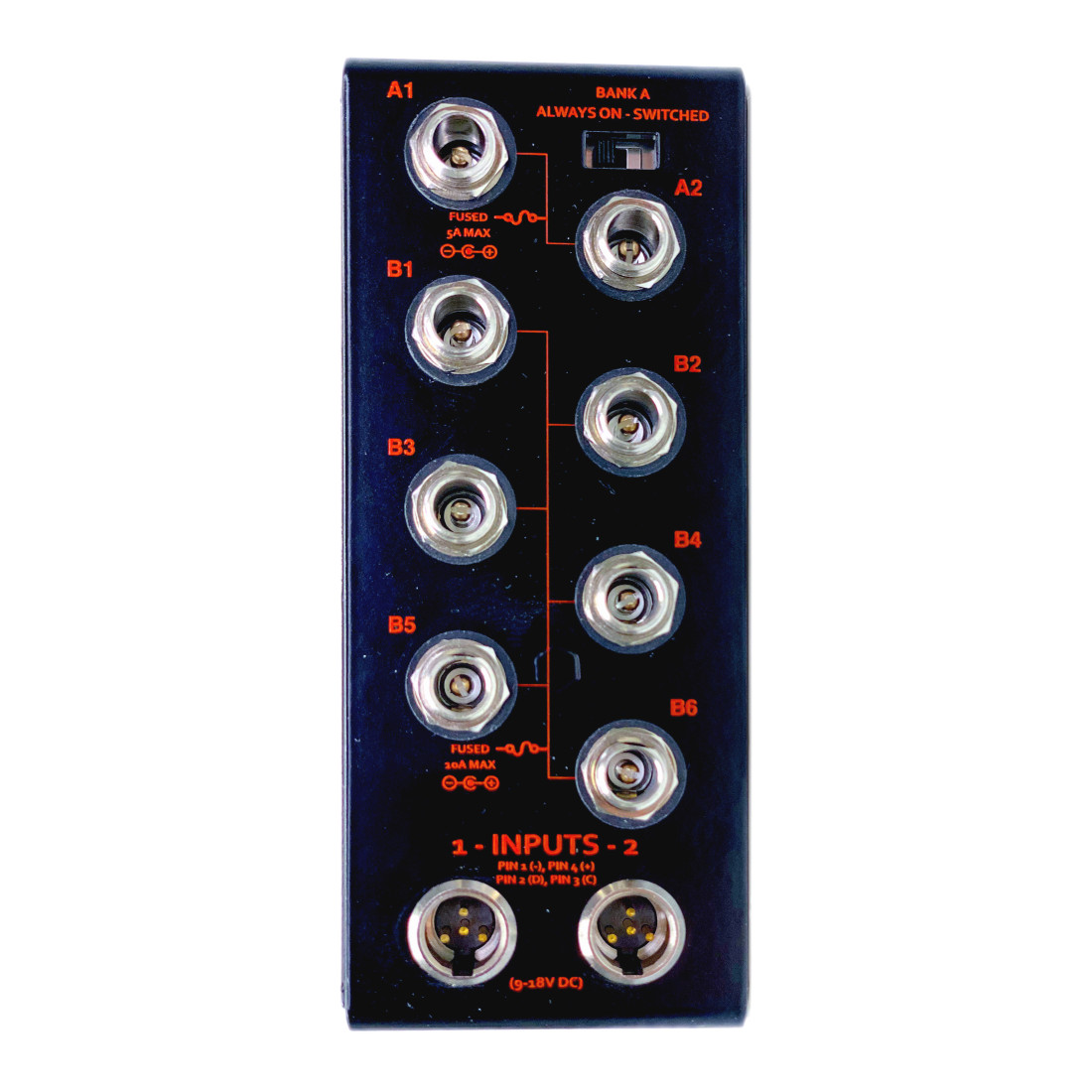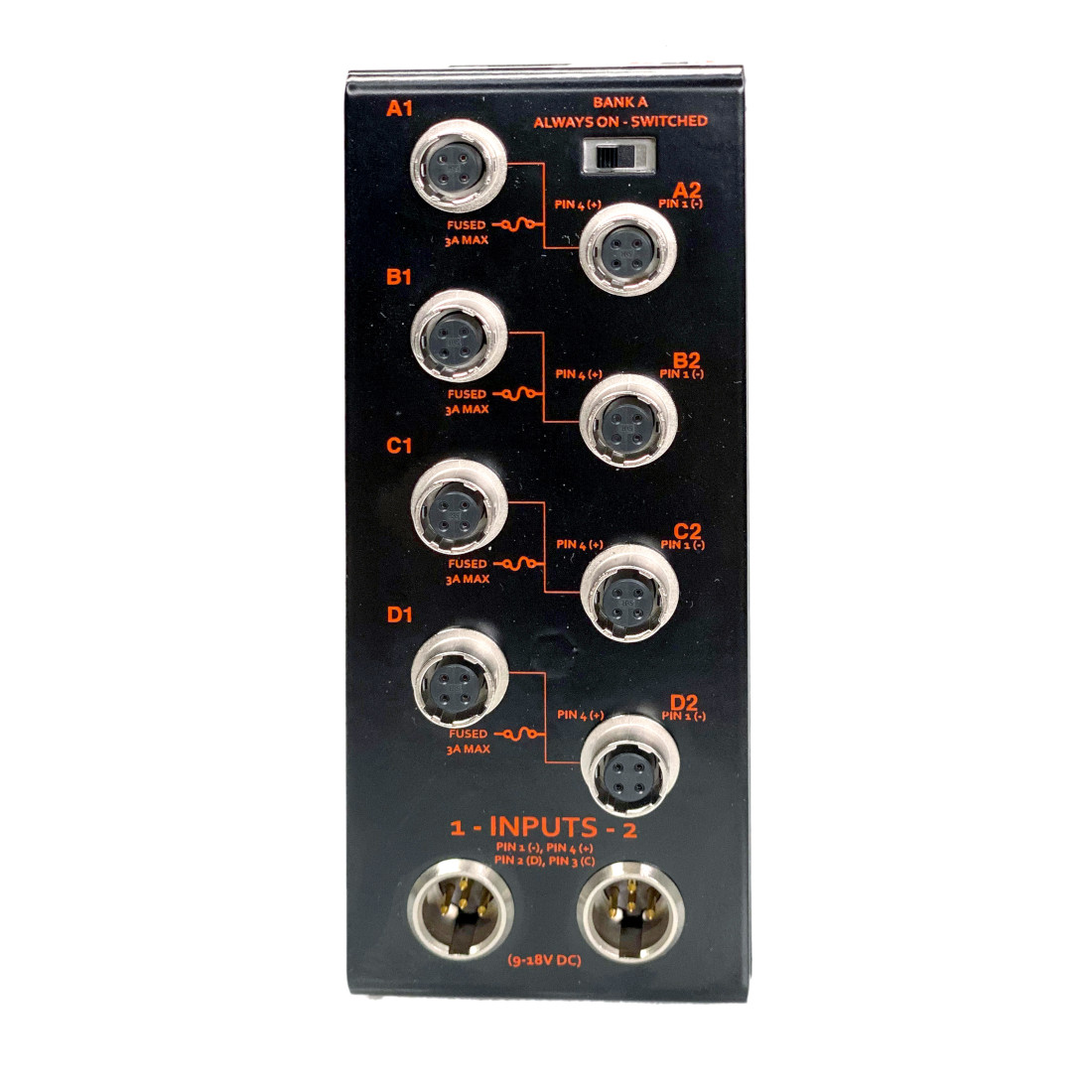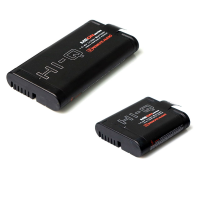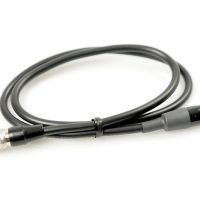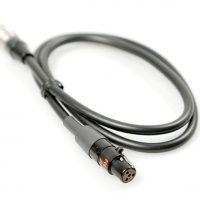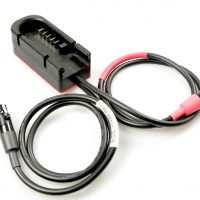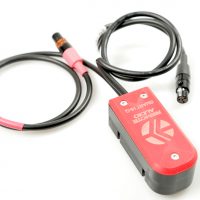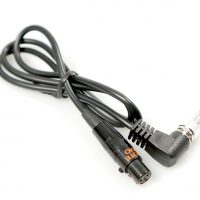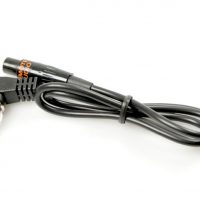- No products in the cart.
Remote Audio BDSv5 SMART Battery Distribution System
From: 485.00 USD
Remote Audio BDSv5 SMART Battery Distribution System — The next generation of the Remote Audio BDS, the standard in power management systems for ENG audio bags. The BDSv5 SMART has been expanded from 6 to 8 outputs and is available with 2 output connector variants: Standard (5.5mm barrel jack) and Hirose (4-pin).
SKU: REMBDSV5
Categories: Battery Distribution System, Featured, Hardware, Power Solutions, Remote Audio
Tag: Remote Audio
Description
Remote Audio BDSv5 SMART Battery Distribution System
Remote Audio BDSv5 SMART Battery Distribution System — The next generation of the Remote Audio BDS, the standard in power management systems for ENG audio bags. It is a 12V nominal compact DC power distribution system that now features dual power inputs that allow for battery hot swapping, as well as input priority and load sharing for higher current draw conditions. It incorporates System Management Bus (SMBus) communications and a built-in 0.95” color OLED display for detailed usage and runtime statistics when using smart batteries equipped with internal Battery Management Systems (BMS), such as Remote Audio’s HI-Q 49Wh and 98Wh batteries. Additionally, the BDSv5 SMART has been expanded from 6 to 8 outputs and is available with 2 output connector variants: Standard (5.5mm barrel jack) and Hirose (4-pin).
Inputs
The BDSv5 SMART’s dual TA4-pin inputs can accept various types of batteries and DC input sources ranging from 9-18 Volts DC. The dual inputs feature an integrated power path controller, meaning you no longer need to shut down critical gear when it comes time to change out a depleted battery pack. Simply remove one of the batteries from its corresponding battery cup and pop in a fresh one, while the other battery maintains an uninterrupted* output. The power path’s interconnected ideal diode controllers prevent reverse current flow from one battery into the other.
*The total load on the BDS must be less than a single battery’s rated max discharge current to perform hot swaps.
Priority Input
A new feature to the BDSv5 is input priority. When enabled in the settings menu, the BDS will prioritize drawing power from Input #1 while Input #2 goes into standby. This allows you to prioritize using say an AC to 12V DC adapted power supply plugged into Input #1 while conserving a 14.4V smart battery plugged into input #2. If the voltage of Input #1 falls below a threshold, the BDSv5 will automatically fail over to the second input for uninterrupted power output. Once power is restored to Input #1, it resumes its priority role for powering the load and Input #2 will go back into standby. It should be noted that a battery in standby will still have a very small current draw on it from the battery communications and microprocessor of the BDSv5, so it is normal to see a battery in standby discharge slowly over time.
Load Sharing
Another new feature of the BDSv5 is a load sharing function between two batteries, whereby you can power loads that draw more current than a single battery pack is capable of supplying by itself. For example, two HI-Q 49Wh, 3.4Ah batteries could supply up to 6.8Amps when load sharing, and two HI-Q 98Wh, 6.8Ah batteries could supply up to the BDS’s limit of 12 Amps total current when load sharing. To enable load sharing, you must turn off the Priority #1 setting in the settings menu. For best performance when load sharing, it is recommended to always use two batteries of equal capacity and similar states of charge. These features greatly expand the BDSv5’s usability from ENG bags of all sizes to small and even mid-sized cart systems.
Output Current Limit
Since the BDSv5 can accept multiple battery capacities and DC sources, the BDSv5 Smart employs a dynamic current limit and warning system. The maximum total load current handling of the BDSv5 is 12 Amps. However, depending on what the input source type is or whether you have just one input active, a lower current limitation and warning could be imposed. By default, any non-smart battery or DC input source is limited to 6 Amps (per TA-4 input). Smart batteries capable of BMS communications will be limited to a 1C maximum discharge rate for safety.
1C is a rate of 1 times the battery’s capacity so for a 49Wh battery with a capacity of 3.4 Amp hours, it would be limited to 3.4 Amps max current. Likewise, a 98Wh battery with a capacity of 6.8 Amp hours, would be limited to 6.8 Amps max current. Using two 49Wh smart batteries in load sharing would allow up to 6.8 Amps of current draw, while two 98Wh batteries would allow current draw up to the BDSv5’s overall maximum rating of 12 Amps. When the load current is over 80% of the allowed limit, the color of the displayed load will change to yellow; when the load current is over 90% of the set limit, the color of the displayed load will change to red; and when an overload condition is sensed, the load portion of the display will show an “OVERLOAD!” alarm. If the overload is sustained, the BDSv5 will trigger an automatic load shed, shutting down the switched outputs for ten seconds while the switch LED alternately flashes red and green. After the 10 seconds of shutdown, the BDSv5 will clear the alarm and try to re-enable the switched outputs.
Display Modes
The BDSv5 SMART features a compact 0.95” color OLED display to provide the user with enhanced smart battery telemetry. Double pressing the select button changes the display’s screen mode to allow the user to see additional Smart Battery data. The Default Screen mode displays the battery voltage in a large font and the battery’s state of charge and estimated runtime below it. In the second screen mode, battery voltage and the battery state of charge will swap locations and font sizes. The Load display will also change from displaying the total load in (A) Amps to (W) Watts. Double pressing the select button again changed to the third screen mode. The battery’s cycle count is displayed Inside the blue battery, with the Temperature displayed in a large font next to it. Below is displayed the battery state of charge and the battery’s serial number. Double pressing the select button again will change the display back to the default screen.
Settings Menu: Pressing the Menu button once while the output switch is in the “on” position (illuminated green) will enter the settings menu. Pressing the Select button will turn the highlighted setting “on” or “off”. Pressing the Menu button advances to the next setting. The settings are as follows:
Screen Flip: The orientation of the text displayed on the OLED can be flipped 180 degrees by enabling this setting. Enabling this setting also flips the action of the output toggle switch to match the screen orientation.
Priority #1: Enabling this setting on the BDS will prioritize drawing power from Input #1 while Input #2 remains in standby. Disabling this setting will allow for load sharing between two batteries.
SAFE Switch: To prevent accidentally toggling the switched outputs “on” or “off”, the BDSv5 SMART includes a SAFE Switch function. When enabled, SAFE Switch requires the user to confirm a power “on” or “off” command from the switched outputs by double pressing the Menu button. If the BDSv5’s switched outputs are “on” and the user toggles the switch to the “off” position, the solid green illuminated switch will begin flashing green as it waits for the user to confirm the switch command by double pressing the menu button. Likewise, if the BDSv5’s switched outputs are “off” and the user toggles the switch to the “on” position, the solid red illuminated switch will begin flashing red as it waits for the user to confirm the switch command by double pressing the menu button. Only once confirmed will the BDSv5 turn “on” or “off” the outputs.
Display Sleep: The OLED display on the BDSv5 can be powered “off” when the BDS switched outputs are “off” by enabling this setting.
USB Sleep: The USB charging port on the BDSv5can be powered “off” when the BDS switched outputs are “off” by enabling this setting.
Temp Celsius: Enabling this setting will change the smart battery temperature readout from Fahrenheit to Celsius.
Disable USB: The USB Charging port on the BDSv5 has a shutdown feature that will disable all charging from that port when enabled.
Specifications
Inputs:
- (2) TA4–pin DC input with smart battery data lines
- Input Voltage Range: 9–18VDC
- Pin 1 (B–), Pin 2 (Data), Pin 3 (Clock), Pin 4 (B+).
BDSv5 “Standard” Outputs:
- (8) DC Barrel Jack outputs (5.5mm diameter, 2.5mm pin) wired center pin (+) configured in two
output banks:
- Bank A: (2) DC Jacks fused at 5 Amps maximum combined load with a switched/unswitched
power selector. - Bank B: (6) DC Jacks fused at 10 Amps maximum combined load with switched power
output.
- Bank A: (2) DC Jacks fused at 5 Amps maximum combined load with a switched/unswitched
- (1) USB type–A Charging Port that supports DCP schemes for battery charging specification (BC1.2), divider mode, 1.2V/1.2V mode, and quick charge specification (QC 3.0). Automatic protocol negotiation. 3 Amps maximum charging current.
BDSv5 “Hirose” Outputs:
- (8) Hirose 4–pin outputs wired Pin 1 (–), Pins 2 & 3 (N.C.), Pin 4 (+) configured in four output banks:
- Bank A: (2) Hirose Jacks fused at 3 Amps maximum combined load with a switched/unswitched power selector.
- Bank B: (2) Hirose Jacks fused at 3 Amps maximum combined load with switched power output.
- Bank C: (2) Hirose Jacks fused at 3 Amps maximum combined load with switched power output.
- Bank D: (2) Hirose Jacks fused at 3 Amps maximum combined load with switched power output.
- (1) USB type–A Charging Port that supports DCP schemes for battery charging specification (BC1.2), divider mode, 1.2V/1.2V mode, and quick charge specification (QC 3.0). Automatic protocol negotiation. 3 Amps maximum charging current.
Current Handling:
- Up to 12 amps maximum total load current.
Power consumption: (No load connected)
- 10 mA with Output switched OFF; OLED Sleep = ON; USB Shutdown = ON; BLE connect = OFF.
- 20 mA with Output switched ON (display is active); USB Shutdown = OFF; BLE connect = OFF.
Physical dimensions:
- 4.5” height x 1.8” width x 2.1” depth (with belt clip)
Related Products
-
Remote Audio Battery Hi-Q
From: 135.00 USD[modal title="HAZARDOUS MATERIALS NOTICE" button_text_opener="SPECIAL SHIPPING NOTICE" opener="button" button_style="alternative" ]Please be aware that US Federal regulations qualify certain lithium batteries as "Hazardous Materials". This qualification carries with it an additional fee of $75 if said items are transported via aircraft. Additional fees for these items are also assessed if shipping internationally. This is a flat…
Product Categories
- Bargain Bin
- Books
- Boom Poles
- Cables & Adapters
- Camera Interfaces
- Cases, Bags & Harnesses
- Clearance
- Communications
- Connectors
- Deal Center
- Expendables
- Featured
- Headphones
- Holiday Clearance
- In-Ear-Monitors
- Interfaces
- Microphones & Accessories
- Mixers
- Motorola
- NAGRA
- New Product
- Podcast
- Power Solutions
- PPE
- Press Boxes
- Pro Audio Converters
- Pro Video
- Recorders
- Slates & Timecode
- Sound Carts
- Trew Merchandise
- Uncategorized
- Used
- Walkie-Talkies
- Wireless


 US
US  Canada
Canada 